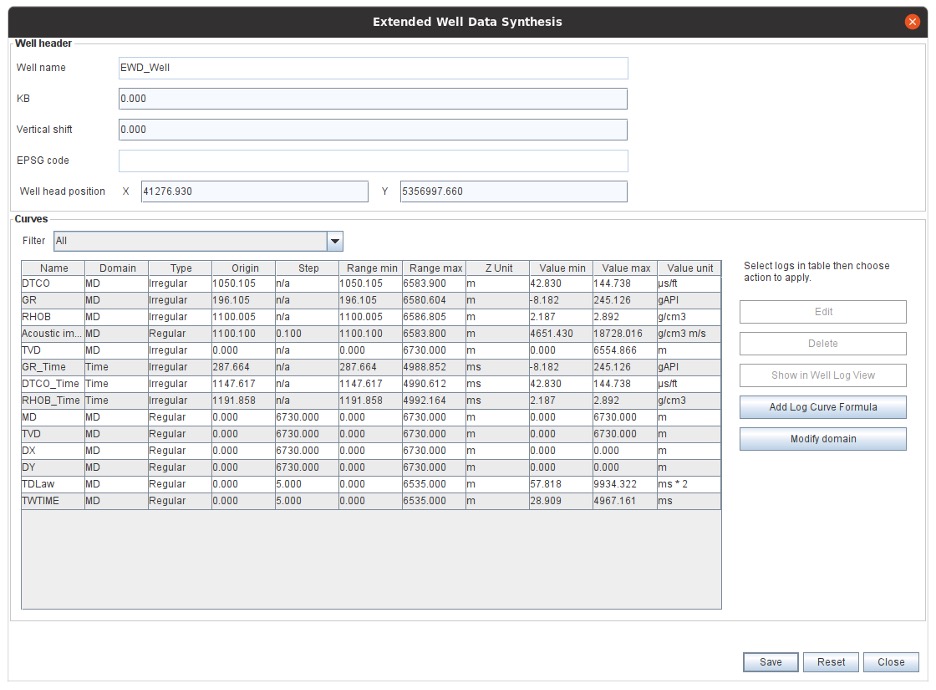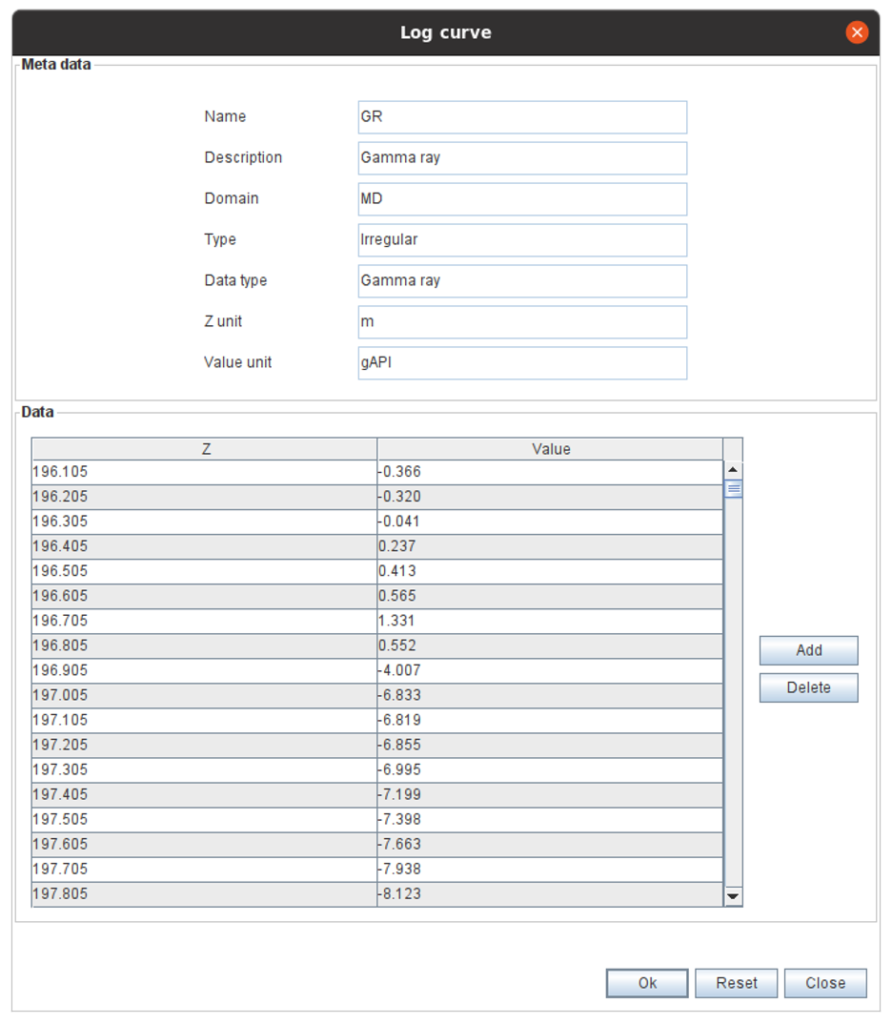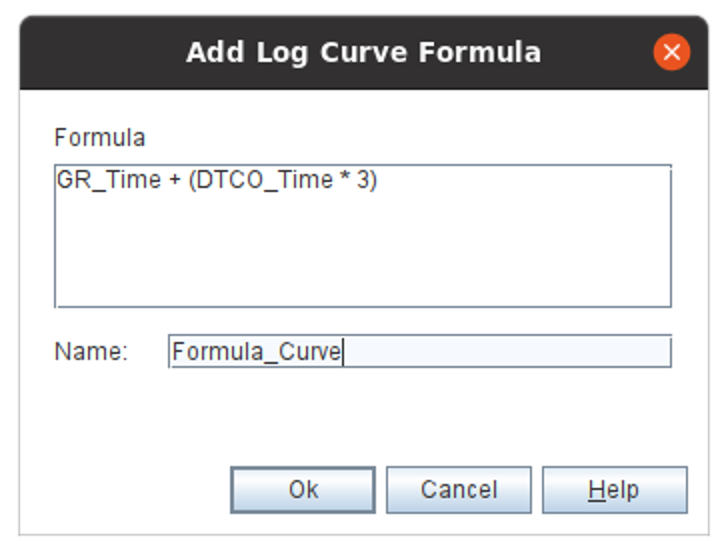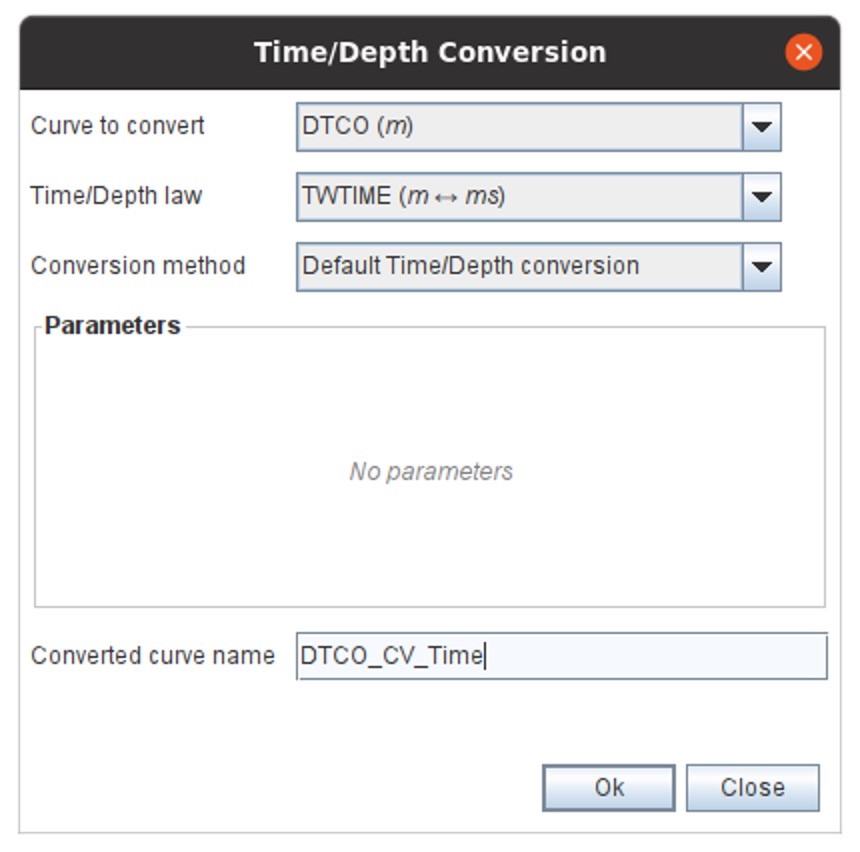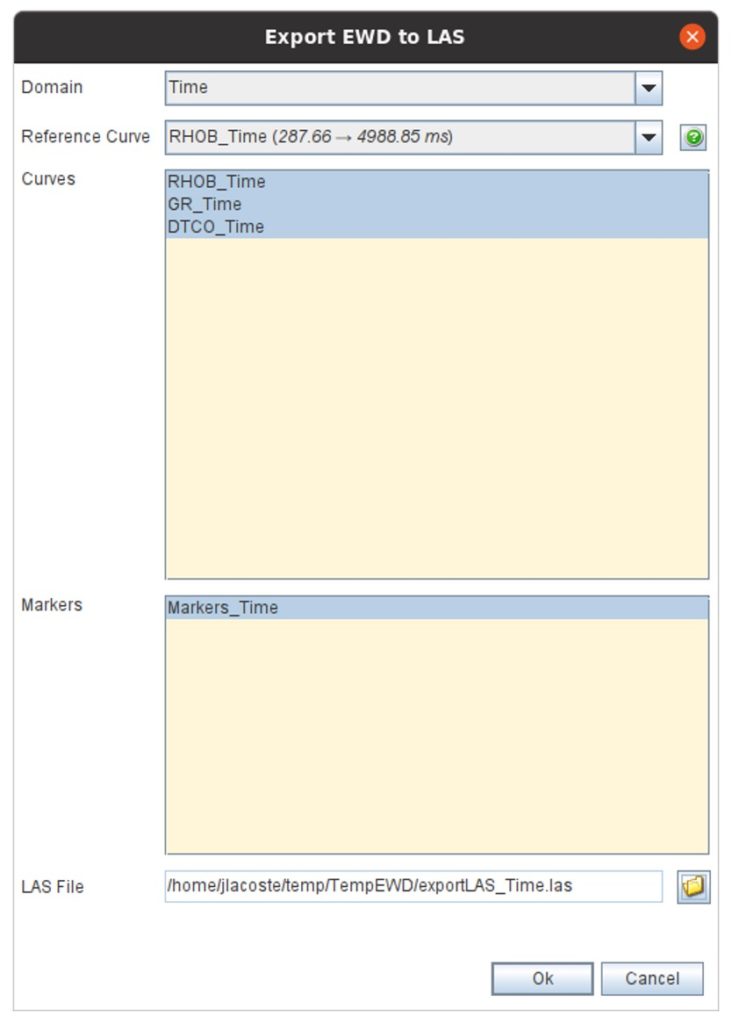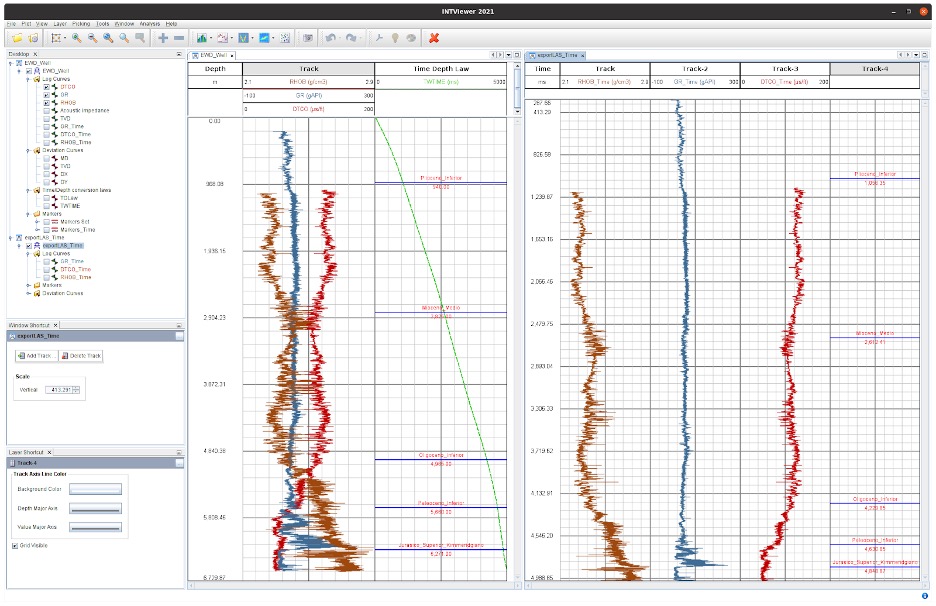See how Apache SIS, with IVAAP, helps support our client’s coordinate systems by using less code.
With the recent release of IVAAP 2.9, now is a good time to reflect on the help we got along the way. One of the components that made IVAAP possible is the Apache SIS library. The goal of this blog article is to bring more visibility to this awesome Java library.
What Is the Apache SIS Library?
Apache SIS is an open-source library written in Java that makes it easier to develop geospatial applications. Many datasets have metadata designating their location on Earth, and these locations are relative to a datum and a map projection method. There are many datums and many map projection methods. Apache SIS facilitates their identification and the accurate conversion of coordinates between them.
What’s a Datum and What’s a Map Projection Method?
Most people are familiar with latitude and longitude coordinates. This geographic coordinate system has been used for maritime and land-based navigation for centuries. Since the late 1800s, the line defining 0º of longitude has been the Prime meridian, crossing the location of the Royal Observatory in Greenwich, England. This meridian defined one axis, from South to North. The equator defined the other axis, from West to East. The origin point of this system on the Earth’s surface is in the Gulf of Guinea, 600 km off the coast of West Africa.
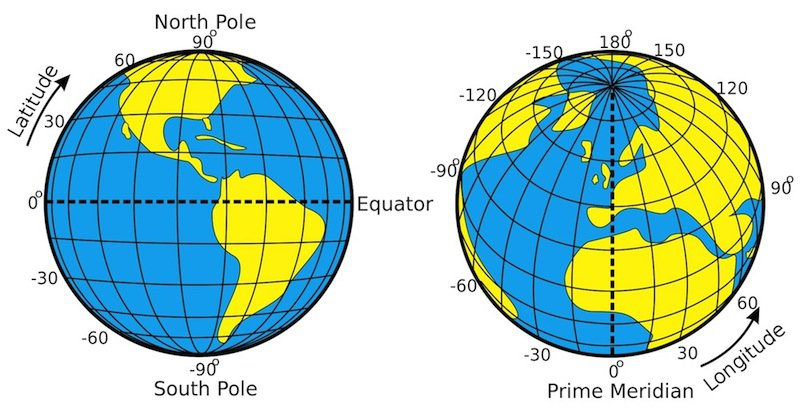
Similarly, a datum defines the origin point of the coordinate axes on the Earth’s surface and defines the direction of the axes. To account for the fact that the Earth is not a perfect sphere, a datum also describes the generalized shape of the Earth. For example, WGS 84 (World Geodetic System 1984) is a widely-used global datum based on latitudes and longitudes where the Earth is modeled as an oblate spheroid, centered around its center of mass.

WGS 84 is used by GPS receivers and the longitude 0º of this datum is actually 335 ft east of the Greenwich meridian.
While universal latitude and longitude coordinates are convenient, they are not universally practical because of land masses drift. Satellite measurements show that the location of Houston relative to the WGS 84 datum changes by 1 inch each year. A local datum is a more pragmatic choice than a global datum because distances from a local point of reference are smaller and don’t change over the years when all locations are on the same tectonic plate. A local datum may also align its spheroid to closely fit the Earth’s surface in this particular area.
A map projection method indicates how the Earth’s surface is flattened into a plane in order to make a 2D map. The most widely known projection method was presented by Gerardus Mercator in 1569. This is a global cylindrical projection method. It preserves local directions and shapes but distorts sizes away from the equator.
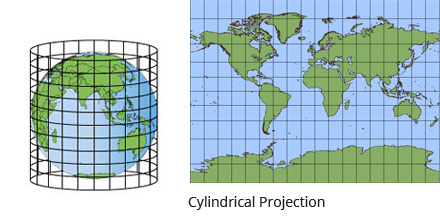
In the US, the Lambert Conformal Conic projection has become a standard projection for mapping large areas. This is a projection that requires multiple parameters, defining the longitude and latitude of its center, a distance offset to this center, and the latitude of its southern and northern parallels.
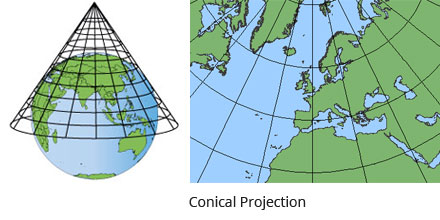
When a datum and a projection are used together, they define a projected coordinate reference system. While local systems limit distortions, they are only valid in a small area, an area known as the ”area of use” where a minimum level of accuracy is guaranteed.
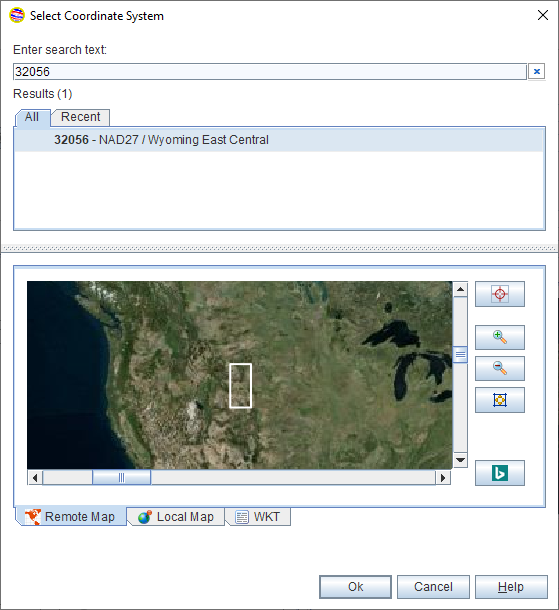
How Does Apache SIS Help IVAAP?
To show geoscience datasets on one of IVAAP’s 2D map widgets, you need to use a common visualization coordinate reference system.
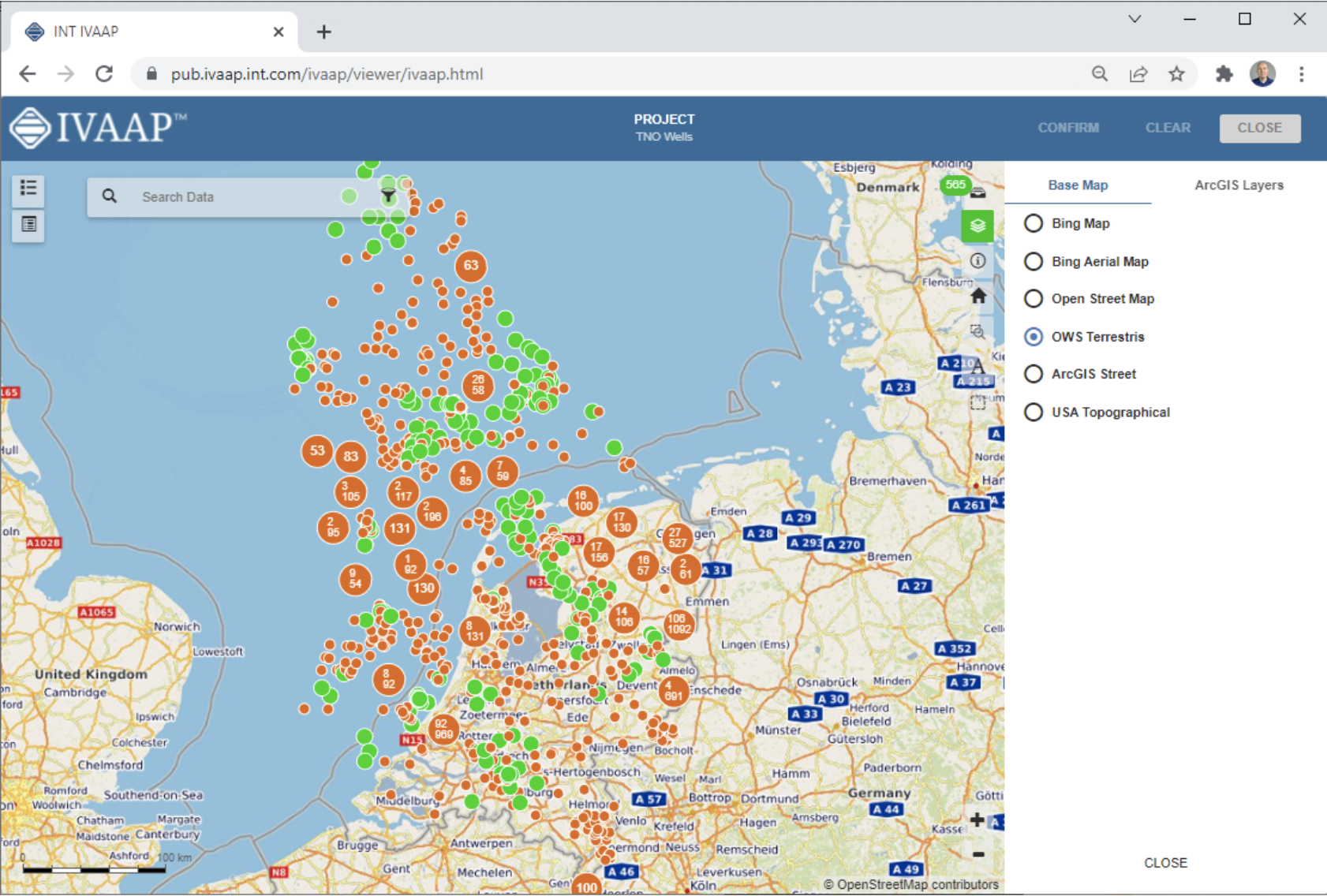
This is where Apache SIS helps us: It understands the properties of both the data and visualization systems and is able to convert coordinates between them.
The math to perform these conversions is complex, this is not something you want to implement on your own. It requires specialized skills, both as a programmer and a domain expert. And just beyond the math, the number of datums and projection methods is mind-boggling. Many historical surveys are still in use today. For example, there are two datums used for making horizontal measurements in North America: the North American Datum of 1927 (NAD 27) and the North American Datum of 1983 (NAD 83). The two datums are based on two different ellipsoid models. As a result, the two datums have grid shifts of up to 100 meters, depending on location. IVAAP is able to visualize datasets that used NAD 27 as a reference, and it is Apache SIS that makes it possible to accurately reproject these coordinates into modern coordinate systems, accounting for their respective datum shift.
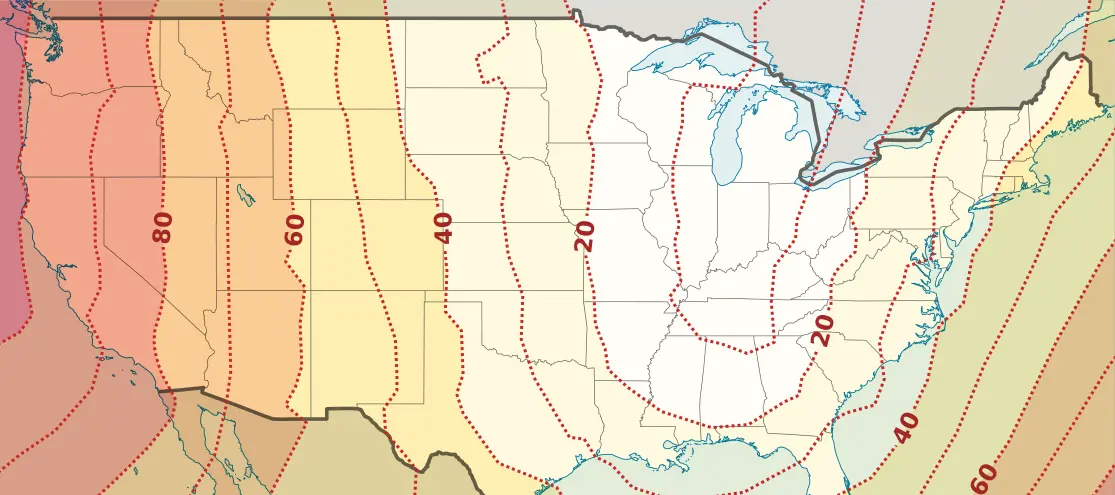
The oil and gas industry is at the origin of some of these local coordinate systems. Many of today’s new oil fields are in remote areas, initially lacking a geographical survey. There is an organization called the “OGP Surveying and Positioning Committee” which keeps track of these coordinate systems. It is colloquially known as “EPSG” for historical reasons. It regularly provides a database of these coordinate systems to all its members. This database is used by IVAAP and Apache SIS provides a simple API to take advantage of it. Each record in this database has a numerical WKID (Well Known ID). To instantiate a projection method or a coordinate system defined in this database, you just need to prefix this id with the “EPSG:” string.
OperationMethod method = getCoordinateOperationFactory().getOperationMethod("EPSG:9807"); // Transverse Mercator method
CoordinateReferenceSystem crs = CRS.forCode("EPSG:32056”);
The EPSG database itself is extensive, but it is common for INT customers to use unlisted coordinate reference systems, created for brand new oil fields. In these cases, a WKT (Well Known Text) string can be used instead. This text is a human-readable description of a projection method or coordinate system. The Apache SIS provides a clean API to parse WKTs. It also provides an API for formula-based projection methods that can’t be described by a WKT.
PROJCS["NAD27 / Wyoming East Central",
GEOGCS["NAD27",
DATUM["North_American_Datum_1927",
SPHEROID["Clarke 1866",6378206.4,294.9786982139006,
AUTHORITY["EPSG","7008"]],
AUTHORITY["EPSG","6267"]],
PRIMEM["Greenwich",0,
AUTHORITY["EPSG","8901"]],
UNIT["degree",0.0174532925199433,
AUTHORITY["EPSG","9122"]],
AUTHORITY["EPSG","4267"]],
PROJECTION["Transverse_Mercator"],
PARAMETER["latitude_of_origin",40.66666666666666],
PARAMETER["central_meridian",-107.3333333333333],
PARAMETER["scale_factor",0.999941177],
PARAMETER["false_easting",500000],
PARAMETER["false_northing",0],
UNIT["US survey foot",0.3048006096012192,
AUTHORITY["EPSG","9003"]],
AXIS["X",EAST],
AXIS["Y",NORTH],
AUTHORITY["EPSG","32056"]]
The WKT of NAD27 / Wyoming East Central, with the WKID 32056
Why Did INT Choose Apache SIS Over Other Options?
INT had previous experience using GeoTools. Similarly to Apache SIS, GeoTools is a Java library dedicated to facilitating the implementation of geographical information systems. Being an older library, it goes much further than Apache SIS. For example, one of its components allows the parsing of shape files, something currently outside of the scope of Apache’s library. As a matter of fact, the first versions of IVAAP were using GeoTools for coordinate conversions.
One of the issues we encountered with GeoTools is that it is a library that provides only fine-grained Java conversion APIs. There are several paths to convert coordinates between two systems, and GeoTools allows the developer to choose the best method. Choosing the “best” method without human interaction is complex; it depends on the extent of the data being manipulated and the “area of use” of each coordinate reference system involved. It also depends on the availability of well-known transformation algorithms between datums. In North America, the standard for transformations between datums was formerly known as NADCON. The rest of the world uses a standard known as NTV2. Apache SIS works with both datum shift standards. It may elect to use WGS 84 as a hub when no datum shift is applicable. An algorithm to pick the best method would require a significant amount of code for INT to write and maintain. While Apache SIS allows fine-grained control over the different transformations used when converting from one coordinate reference system into another, it also provides a high-level API to perform this conversion. The picking of the best algorithm is part of the Apache SIS’ implementation. Its high-level Java API that picks a conversion algorithm matches IVAAP’s general use microservice for the same function. To pick the right algorithm, it only takes 3 parameters:
- A definition of the “from” coordinate system
- A definition of the “to” coordinate system
- A description of the “extent” of the coordinates to convert
double x = …
double y = …
GeographicBoundingBox extentInLongLat = …
DirectPosition position = new DirectPosition2D(x, y);
CoordinateReferenceSystem fromCrs = CRS.forCode("EPSG:32056");
CoordinateReferenceSystem toCrs = CRS.forCode("EPSG:3737");
CoordinateReferenceSystem displayOrientedFromCrs = AbstractCRS.castOrCopy(fromCrs).forConvention(AxesConvention.DISPLAY_ORIENTED);
CoordinateReferenceSystem displayOrientedToCrs = AbstractCRS.castOrCopy(toCrs).forConvention(AxesConvention.DISPLAY_ORIENTED);
CoordinateOperation operation = CRS.findOperation(displayOrientedFromCrs, displayOrientedToCrs, extentInLongLat);
MathTransform mathTransform = operation.getMathTransform();
double[] coordinate = mathTransform.transform(position, position).getCoordinate();
Sample code to convert a single x, y position from “NAD27 / Wyoming East Central” to “NAD83 / Wyoming East Central”
We still use GeoTools for other parts, but as a general rule, the Apache SIS Java API tends to be simpler, more modern than GeoTools when it comes to manipulating coordinates and coordinate systems.
After 3 years of use, we are happy with our decision to move to Apache SIS. This library allows us to support more of our customers’ coordinate systems, with less code. We are also planning to use it to interpret the metadata of GeoTIFF files. The support has been excellent. When we needed help, the members of the Apache SIS development team were really keen to help us. This is one of the reasons why INT felt we needed to give back to the open-source community. Being a long-time member of OSDU, INT contributed to OSDU a coordinate conversion library built on top of Apache SIS. This coordinate conversion library converts GeoJSON and trajectory stations between different coordinate reference systems. Users can specify the specific transformation steps that will be used in the conversion process, either through EPSGs or WKTs. Behind the scenes, it’s the Apache SIS’ fine-grained API that is being used.
